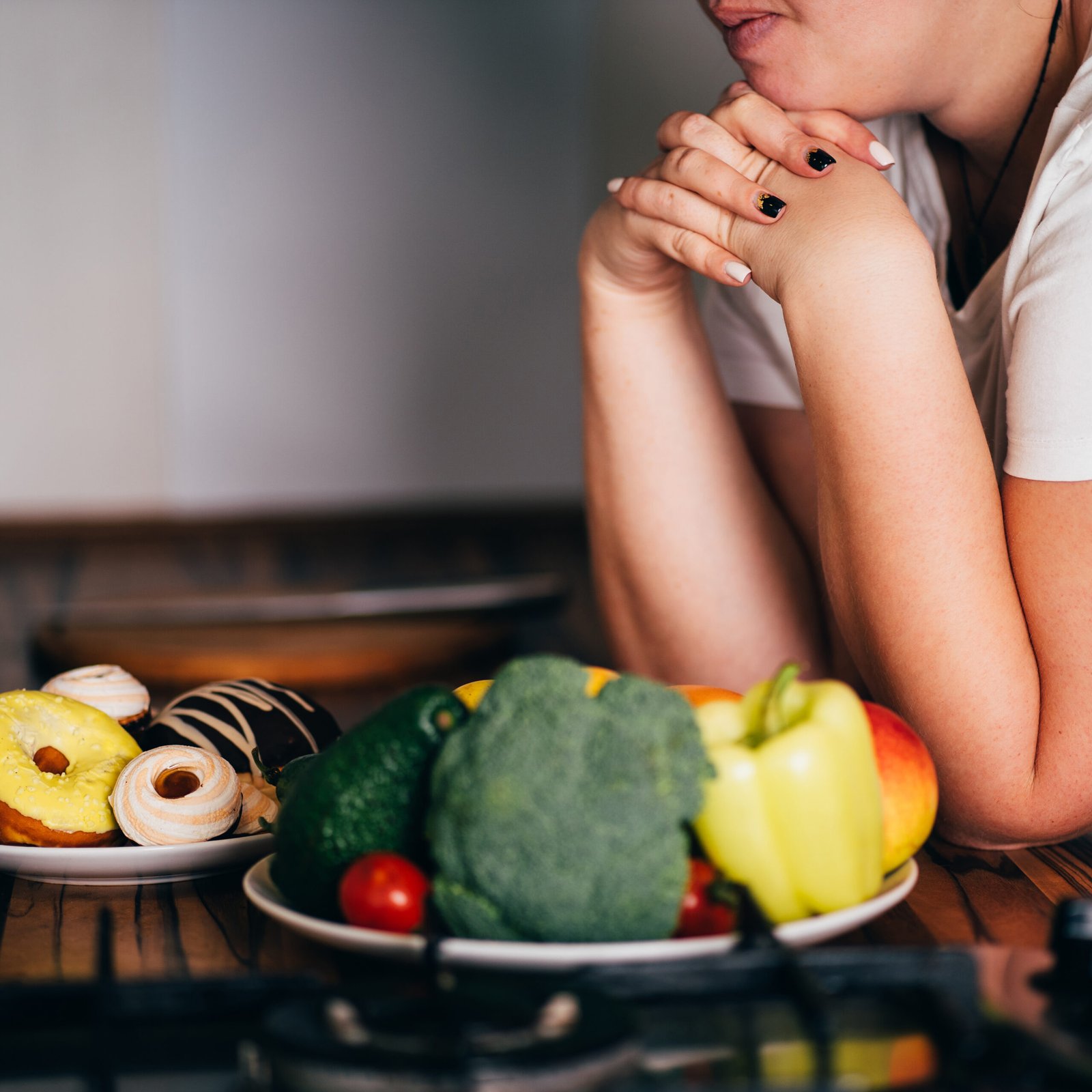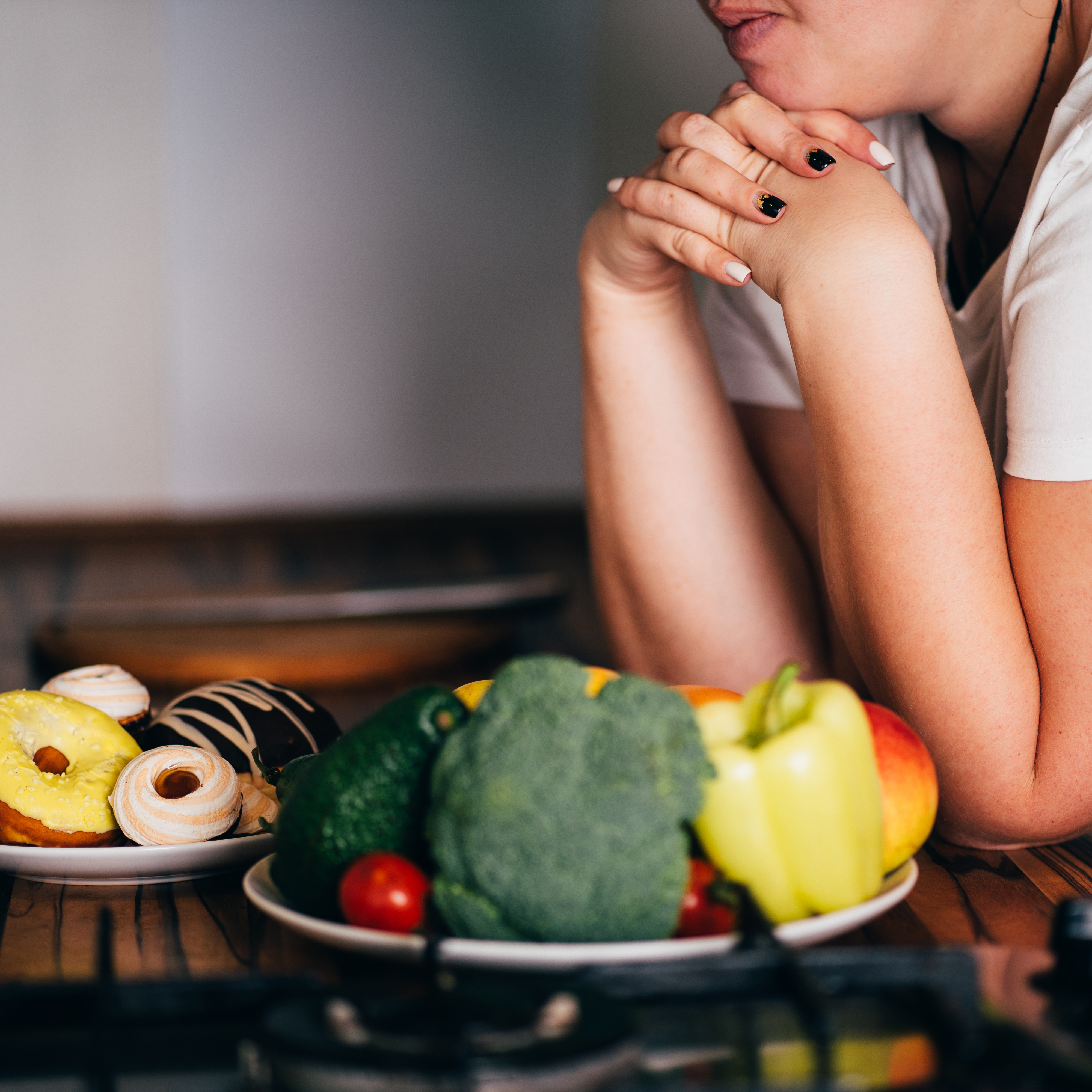
Obesity prevention, conscious eating, nutrition choices, mindfulness and healthy lifestyle. Woman choosing between junk sweets and healthy food
Why Traditional Diets Fail Emotional Eaters and What to Try Instead
Traditional diets promise change but often leave emotional eaters feeling stuck. You’ve tried them all, yet the cycle continues. Why is that? Because emotional eating isn’t just about food—it’s about emotions, self-worth, and finding comfort in unhealthy patterns. Imagine breaking free without counting calories or feeling guilt. At VK Circle, we offer more than a diet; we provide emotional healing and self-love through our 90-day HYL360 Emotional Freedom Program. Ready to discover true food freedom and emotional clarity? Let’s begin this journey together. For more insights on disordered eating, visit this link.## Why Traditional Diets Fall Short

Traditional diets often focus solely on food intake, ignoring the emotional roots of eating habits. For emotional eaters, this approach can lead to disappointment and frustration. Let’s explore why these diets miss the mark and what truly influences eating behaviors.
Emotional Eating vs. Dietary Restrictions
Emotional eating arises from emotions rather than hunger. It’s a way to cope with stress, loneliness, or boredom. On the other hand, traditional diets impose dietary restrictions, which can feel like punishment rather than a solution. This creates a cycle of restriction and binge eating.
Imagine trying to fill an emotional void with restrictions. It doesn’t address the true issue, leaving you feeling deprived. According to the National Eating Disorders Association, this cycle can lead to unhealthy relationships with food.
Consider how emotional eating differs from mere dietary challenges. Emotional triggers require understanding and compassion, not just calorie counting. Breaking free means addressing these emotions at their core.
Impact of Self-Worth on Eating Habits
Self-worth plays a crucial role in eating habits. When self-esteem is low, food becomes a comfort, distorting the relationship with eating. Traditional diets rarely address this aspect, leading to temporary fixes rather than lasting change.
Feeling unworthy can drive emotional eating, as food becomes a stand-in for self-love. Without addressing self-worth, the cycle persists. Research supports the view that self-esteem influences eating behaviors significantly.
Recognizing the connection between self-worth and food choices is essential. Building confidence and self-love helps break free from this cycle. Instead of focusing on food alone, nurturing self-esteem can transform your relationship with eating.
A New Approach to Food Freedom

Instead of restrictive diets, a new approach prioritizes emotional healing and self-love. This method views food as part of a holistic lifestyle, not merely a set of rules. Let’s delve into how this approach can redefine food freedom.
Emotional Healing Over Calorie Counting
Emotional healing involves understanding and addressing emotional triggers, rather than focusing on calorie counting. Traditional diets often ignore the emotional aspects, leading to temporary results.
Consider the process of healing emotions. It involves acknowledging feelings without judgment and finding healthier outlets. According to studies published in Frontiers in Psychology, emotional clarity fosters genuine change.
Imagine a life where food isn’t a source of stress. By prioritizing emotional healing, food freedom becomes attainable. Addressing the root causes of emotional eating leads to sustainable change, far beyond what traditional diets offer.
Building Self-Love and Body Trust
Building self-love and body trust is a crucial step towards food freedom. Traditional diets often undermine self-esteem, while a supportive approach encourages self-acceptance.
Self-love involves appreciating one’s body and acknowledging its needs. When trust is built, food becomes a source of nourishment, not guilt. The Mayo Clinic emphasizes the importance of self-compassion in achieving lasting health goals.
Visualize a relationship with food based on self-love. Trusting your body’s signals rather than external rules fosters a healthier connection with food. This shift can lead to lasting satisfaction and emotional well-being.
Embracing Emotional Clarity

Embracing emotional clarity means understanding and managing emotions effectively. It’s a path toward a healthier relationship with food and oneself. Let’s explore tools that facilitate this transformation.
Tools for Lasting Change
Lasting change requires practical tools that address emotional triggers and support healthier habits. Here are key strategies to embrace emotional clarity:
Mindful Eating: Focus on the present moment during meals, reducing overeating.
Journaling: Document emotions and eating patterns to identify triggers.
Support Networks: Engage with communities or therapy for guidance.
These tools empower individuals to understand their emotions and make conscious food choices. They offer a way to break free from emotional eating patterns and foster genuine healing.
The 90-Day HYL360 Emotional Freedom Program 🌟
The 90-day HYL360 Emotional Freedom Program offers a comprehensive approach to tackling emotional eating. Here’s how it works:
Emotional Insight: Participants explore the roots of their eating habits.
Self-Love Practices: Encourages body trust and appreciation.
Community Support: Provides a safe space for sharing and learning.
Consider this program as a pathway to emotional clarity and food freedom. By addressing emotional causes and promoting self-love, it offers a more sustainable solution than traditional diets. Ready to break free from the diet cycle and embrace emotional clarity? The 90-day HYL360 Emotional Freedom Program can transform your relationship with food. 🌟



